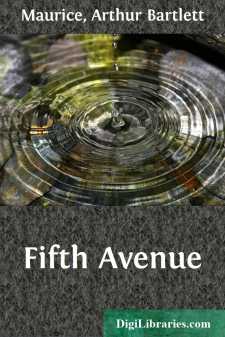Categories
- Antiques & Collectibles 13
- Architecture 36
- Art 48
- Bibles 22
- Biography & Autobiography 813
- Body, Mind & Spirit 142
- Business & Economics 28
- Children's Books 16
- Children's Fiction 13
- Computers 4
- Cooking 94
- Crafts & Hobbies 4
- Drama 346
- Education 46
- Family & Relationships 57
- Fiction 11829
- Games 19
- Gardening 17
- Health & Fitness 34
- History 1377
- House & Home 1
- Humor 147
- Juvenile Fiction 1873
- Juvenile Nonfiction 202
- Language Arts & Disciplines 88
- Law 16
- Literary Collections 686
- Literary Criticism 179
- Mathematics 13
- Medical 41
- Music 40
- Nature 179
- Non-Classifiable 1768
- Performing Arts 7
- Periodicals 1453
- Philosophy 64
- Photography 2
- Poetry 896
- Political Science 203
- Psychology 42
- Reference 154
- Religion 513
- Science 126
- Self-Help 84
- Social Science 81
- Sports & Recreation 34
- Study Aids 3
- Technology & Engineering 59
- Transportation 23
- Travel 463
- True Crime 29
Fifth Avenue
Categories:
Description:
Excerpt
CHAPTER I
The Shadow of the Knickerbockers
Boughton, had you bid me chantHymns to Peter Stuyvesant.
Had you bid me sing of Wouter.
(He! the Onion-head! the Doubter!)
But to rhyme of this one-mocker,
Who shall rhyme to Knickerbocker?
—Austin Dobson.
Before the writer, as he begins the pleasant task, is an old half-illegible map, or rather, fragment of a map. Near-by are three or four dull prints. They are of a hundred years ago, or thereabouts, and tell of a New York when President Monroe was in the White House, and Governor De Witt Clinton in the State Capitol, at Albany, and Mayor Colden in the City Hall. To pore over them is to achieve a certain contentment of the soul. Probably it held itself to be turbulent in its day—that old New York. Without doubt it had its squabbles, its turmoils, its excitements. We smile at the old town—its limitations, its inconveniences, its naïvetés. But perhaps, in these years of storm, and stress, and heartache, we envy more than a little. It is not merely the architectural story that the old maps, prints, diaries tell; in them we can find an age that is gone, catch fleeting glimpses of people long since dust to dust, look at past manners, fashions, pleasures and contrast them with our own.
But to begin with the old map. The lettering beneath conveys the information that it was prepared for the City in 1819-1820 by John Randel, Jr., and that it shows the farms superimposed upon the Commissioner's map of 1811. Through the centre of the map there is a line indicating Fifth Avenue north to Thirteenth Street. Here and there is a spot apparently intended to represent a farmhouse, but that is all; for in 1820, though Greenwich Village and Chelsea were, the city proper was far to the south. Some of the names on the old map are familiar and some are not.
Just above the bending lane that ran along the north side of Washington Square, then the Potter's Field, may be read "Trustees of Sailor's Snug Harbor." The land thus marked extends from what is now Waverly Place to what is now Ninth Street. In 1790 Captain Robert Richard Randall paid five thousand pounds sterling for twenty-one acres of good farming land. In 1801 he died, and his will directed that a "Snug Harbor" for old salts be built upon his farm, the produce of which, he believed, would forever furnish his pensioners with vegetables and cereal rations. Later Randall's trustees leased the farm in building lots and placed "Snug Harbor" in Staten Island. Above the estate, in diagonal form, and at one point crossing Fifth Avenue to the west, was the large farm of Henry Brevoort. More limited holdings, in the names of Gideon Tucker, William Hamilton, and John Morse, separate, in the map, the Brevoort property from the estates of John Mann, Jr., and Mary Mann. The latter must have been a landowner of some importance in her day, for the fragment of a chart runs into the margin above the line of Thirteenth Street without indicating the beginning of any other ownership.
On the land to the west of the Avenue line may be read "Heirs of John Rogers," "William W. Gilbert," "Nicholson" (the Christian name lies somewhere beyond the map horizon), and "Heirs of Henry Spingler." Irrigation is indicated by a line, running in a general northwesterly direction, bearing the name "Manetta Water," while a thinner line, joining the first line from the northeast, is described as "East Branch of Manetta Water." Manetta Water was the English name. The Dutch had called it "Bestavaer's Rivulet." It was a sparkling stream, beloved of trout fishermen, rising in the high ground above Twenty-first Street, flowing southeasterly to Fifth Avenue at Ninth Street, then on to midway between the present Eighth Street and Waverly Place, where it swung southwesterly and emptied into the Hudson River near Charlton Street....


